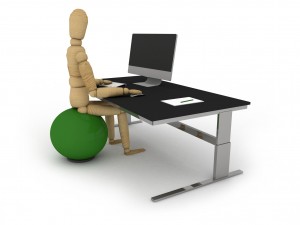 Classroom Ergonomics
Classroom Ergonomics
So much focus is put on office ergonomics and many times, teachers suffer needlessly.
We wanted to offer help for teachers and their students so they can focus on the process of learning rather than musculoskeletal pain.
Teachers spend all day on their feet; pointing, bending and squatting down to low tables. It’s no wonder so many experience such a wide array of musculoskeletal disorders. Students are also dealing many issues as well including: overloaded backpacks, short student desk tops, and the ergonomic challenges of the new electronic mobile devices.
Research says: A study by ergonomists at the UK’s Loughborough University found 88% of examined teachers had experienced back pain, 73% had experienced neck and shoulder pain, 53% had suffered through knee problems, and 33% reported hip problems. Altogether, 82% of those surveyed reported suffering pain from some form of musculoskeletal at least once a week. That’s has to have a big impact on a teacher’s happiness and ability to deal with the many stresses and demands that arise in the classroom.
Here are some tips:
1. Determine some of the challenges in your situation. Is your pain developing after:
- standing too long while teaching?
- reaching up to media on the wall?
- bending over student’s desks?
- sitting at your desk?
- using your computer or laptop?
 2. Sitting/Computer Ergonomics: Chairs should be kept at such a height that your feet fall flat on the ground without angling the knees up or down too much. The armrest should be at a comfortable height, and the desk should be placed so that you can type or grade papers while keeping your elbows at a right angle, with your hands naturally over the desktop or keyboard.
2. Sitting/Computer Ergonomics: Chairs should be kept at such a height that your feet fall flat on the ground without angling the knees up or down too much. The armrest should be at a comfortable height, and the desk should be placed so that you can type or grade papers while keeping your elbows at a right angle, with your hands naturally over the desktop or keyboard.
3. Support Devices for Electronics and Mobile Devices: Although budgets are tight, support devices are a cost-saving investment, as they’re sure to help keep teachers injury-free and productive. As more of us work from mobile devices, a stand for your laptop or tablet will help to place these devices at eye level when working, helping to prevent eye strain and neck and back pain. Ergonomic, wireless keyboards with touch pads allow both mobility and reduce strain on the wrist and arm.
4. Modify teaching positions and keep moving! Of course, none of these solutions will be effective if teachers don’t move throughout the day, and take breaks from stagnate teaching positions.
5. Share ideas within your co-teachers and come up with unique ideas: A team can come up with many new concepts for the variety of situations that can be encountered in different schools.
Points to Take Away…
Whether bending down to pick up a teaching aides, standing on your feet all day, or all those hours spent grading papers, developing an ongoing atmosphere of being alert for positive improvements in ergonomics can make your day pain-free, happier, and a more productive environment!
- What activities have caused you the most pain?
- Did you find a good solution?
- Please… Let us know both your questions as well as your solutions in the comments below.
 Request Appointment
Request Appointment Office Hours
Office Hours


 Email Us
Email Us